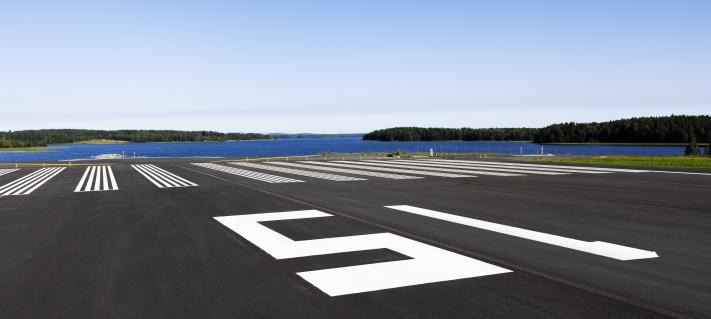The future of electric flight raises a lot of expectations. Solutions for mitigating climate change are needed, and emissions in aviation must also be reduced. The goal of the whole aviation industry is to halve carbon dioxide emissions by 2050, while passenger numbers are still expected to rise.
At Finavia, we believe that electric flight will be a part of solving this puzzle. If a clean method such wind or solar power is used to produce the necessary electricity, the electric aircraft of the future can fly emission-free. When could fully electric aircraft become a reality, then?
The truth is that there are electric aircraft in use already, but for now, they can only carry a few people. Finavia is also funding a fully electric aircraft, the two-seater Pipister Alpha Electro that had a successful test flight at Malmi Airport in Helsinki in summer 2018.
When it comes to electric aircraft usage in passenger traffic, time estimates vary. It is likely that hybrid airplanes – which also have an internal combustion engine – will enter the market first. Hybrid and electric aircraft are currently being developed by both start-ups and large airplane manufactures such as Airbus and Boeing.
I believe that in Finland, the first fully electric passenger aircraft will fly on a domestic route by the end of the 2030s at the earliest. Electric aircraft will be more suited for short routes and are not likely to replace internal combustion engines completely.
It is important to understand that electricity is only part of the solution. We need swift climate action; we cannot rely on electricity alone because advancing the technology will still take some time. Battery technology needs to develop and have 50 times the charging power we have today for electricity to genuinely challenge fossil fuels. At the moment, the charging power and weight of batteries are the bottlenecks of technological development. The cost and safety of electric aircraft will also set challenges, at least in the beginning.
At Finavia, we believe that all means must be utilised in cutting climate emissions. Using electric aircraft is one solution, and other equally important ones are improving the energy efficiency of current technology, using biofuels and compensating emissions.
As an airport operator, we are committed to doing our share. All Finavia airports in Finland are now carbon neutral, and we are currently developing better charging infrastructure for electric vehicles. At the same time, we are preparing for the future of electric flight. We are strongly involved in investigating the technology and looking into what kind of development work it requires from our Finnish airports.
Read Katja Siberg's commentary for the fast Airport railway line
Watch a video about Finavia’s corporate responsibility – the Sum of Good things




